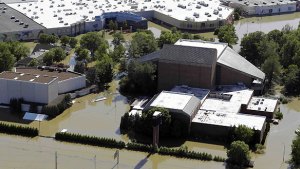(From a BusinessInsider.com article)   As an entrepreneur /executive one of the decisions you need to make is who to use to help you insure your company. Â
As an entrepreneur /executive one of the decisions you need to make is who to use to help you insure your company. Â
 For some reason many people go to great lengths to do due diligence when selecting an attorney or accountant, but then spend thirty seconds deciding who should handle their insurance. Â
Those people tend to do business with one (or more) of five types of people.Â
So here are the five types you meet when you buy insurance – and how they could impact your company.
1. The Buddy - You’ve just set up your company and you need the basics – General Liability, Workers Comp, Property, etc.  The guy on your whiffle ball team, who also helped you with your homeowners insurance, says he can hook you up! He has no experience working with other companies like yours, no relationships with insurers that are familiar with your industry. But he’s a great guy and he assures you it’s a no-brainer.Â
He sends you some applications to fill out. The questions seem odd, don’t really apply to your company – and most of all it takes a sh*$! ton of time for you to complete.
You fax them back, wait a couple of weeks and he surfaces with a policy and a bill.
The Result:Â Â No thought went into anticipating what you may need next – like Errors & Omissions when you sign your first client contract (E&O is coverage that addresses claims that your product or service didn’t work properly or caused some kind of harm to someone), Directors & Officers when you get your first round of financing (D&O is basically coverage that protects the management team and board from claims that they mismanaged the company), global coverage when you open a sales office in the UK, etc.Â
 The insurer you are with – let’s call them Quicksand Mutual – can’t provide any of those coverages. So when they come up, which will be sooner than you think, there will be a mad scramble to find these policies with different insurers, costing you time and more money.
You end up with a disjointed, patchwork insurance program with multiple insurers and no economies of scale by having everything in one package. Since your buddy has no experience in your industry, he has no ability to provide services that may drive down your cost and reduce the likely hood of your having a claim.Â
Now you can get away with the buddy’s insurance program for a while – but if you have a claim, or need advice on a contract or industry specific issue you will find out the hard way that he was not the right broker for you.
2. The Biggest Broker in the World!  Your company is the next Facebook.  You have some high profile VC board members.  You need to work with the Biggest Broker in the World!Â
In fact, one of those board members knows one of the top executives from the Biggest Broker in the World! from his country club.
The Result:  The Biggest Broker in the World! handles the insurance for companies like Microsoft, Dell and Cisco. Their best talent handles those accounts. Their average account brings in $50,000 of revenue in both commissions and other fees.Â
 All of your policies combined will throw off a total of twelve hundred bucks of income. You will have a lot of questions and need a lot of hand holding. Your company will change a lot over the next couple of years – hiring and firing, adding locations, new products, new client contracts, etc. Â
The Biggest Broker in the World! assigns you to their D team – maybe a recent college grad, maybe a service center…..until you can be more profitable for them. Like when you are about to have your IPO.Â
You’ll wait won’t you? And will you also please let them know when you are bigger, cause no one at their company even knows they insure you.
3. The Butcher, 4. The Baker, and 5. The Candlestick-maker …. You already bought a policy from the Buddy (for this segment let’s call him the Butcher). Now you open an office in San Jose. The Butcher doesn’t have a license in CA and suggests that you contact someone local out there.  He knows a guy from insurance school, the Baker.Â
 You call the Baker and he is happy to set you up with a set of new policies for your California office!Â
Next, you land that big round of VC money and the term sheet says you need Directors and Officers (D&O) insurance. The Butcher and Baker both say they can do it for you but you’re not so sure. This one seems a little more sophisticated. The VC suggests a broker that they use, that specializes in D&O insurance, the Candlestick-maker.Â
This guy drives his Benz to your office, tells you about how he handles the D&O insurance for the last four IPO’s in the country and assures you that you are with the right broker (NOTE: some brokers specialize in specific types of policies as opposed to industry segments where they can handle all types of insurance for that niche. This happens a lot with D&O as the premiums are usually high, and there is little or no service work involved – so they throw off a lot of income to a broker. Hence the Benz.).Â
He sets you up with a state of the art D&O policy. It is the most expensive insurance policy you have ever seen.
The Result:Â Â You have three brokers.Â
 None of these characters communicates with the other. You have overlapping coverages and therefore are paying duplicate premiums.Â
None of them feel like they are “in charge†of your account, so they don’t make any recommendations, review/update coverage or take much of an interest in your company.Â
None of them realizes you have salespeople working from their homes in 6 States and now each State’s insurance department is fining you for non-compliance on Workers Comp.Â
You have bills coming in from 3 agents, at least 3 insurers and your bookkeeper can’t figure out which bill is for which policy. A new client contract calls for evidence (a certificate) of insurance. Hmmmmm, guess you gotta call all 3. You have a claim and are unsure which policy would cover it, so you call all 3 brokers, none of whom think their policy will cover it.Â
But go ahead and send it in; the insurers will fight it out. Ahhh, music to your ears while your company is getting sued…
What to do instead:  So, when it comes time to get insurance – maybe the bank, landlord or VC is requiring it – rather than just hiring anyone so you can check a box and move on, spend a little extra time selecting your broker. It will pay dividends down the road. Here are some questions you should consider asking a prospective broker:
- Â What other companies in my industry/like mine do you work with?
- Can I call someone at those companies and ask about your work?
- My company is poised for growth an we expect a lot of moving parts – and insurance is not our main consideration. How will you help us stay on top of these changes so we don’t miss anything?
- Do the insurers you work with specialize in my niche and offer industry specific coverage?
- What special services do you provide that will help me save time, reduce my premiums and minimize the possibility of us having a claim?
- How much time should I expect to spend on completing applications?
- Can you describe your smallest and largest clients?
- Do you handle all areas of insurance for companies like ours or just one type of coverage?
- Do you have any group buying programs where I can leverage the power of a bigger group in my industry?
Read more: http://www.businessinsider.com/the-5-brokers-to-avoid-when-buying-small-business-insurance-2010-4?utm_source=feedburner&utm_medium=feed&utm_campaign=Feed%3A+businessinsider+%28Business+Insider%29&utm_content=Yahoo%21+Mail#ixzz0lK2TIRmK












